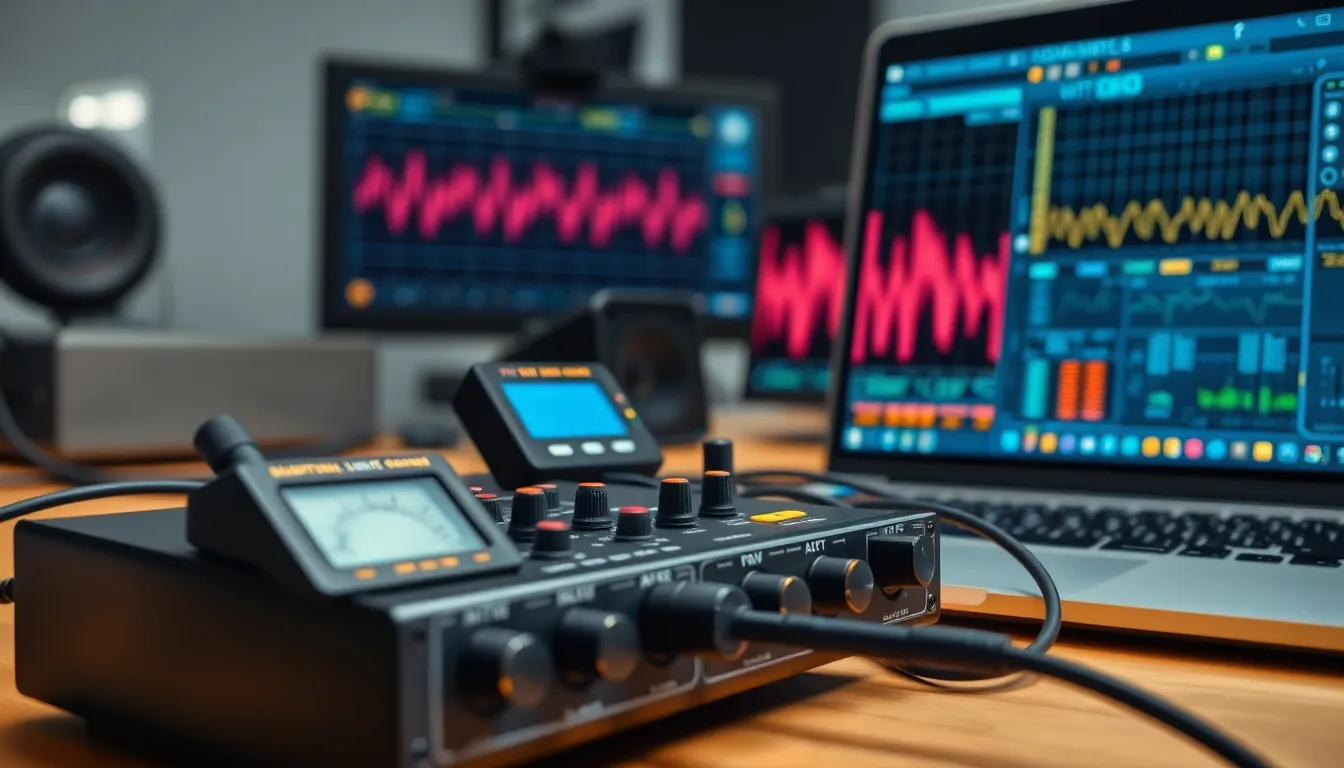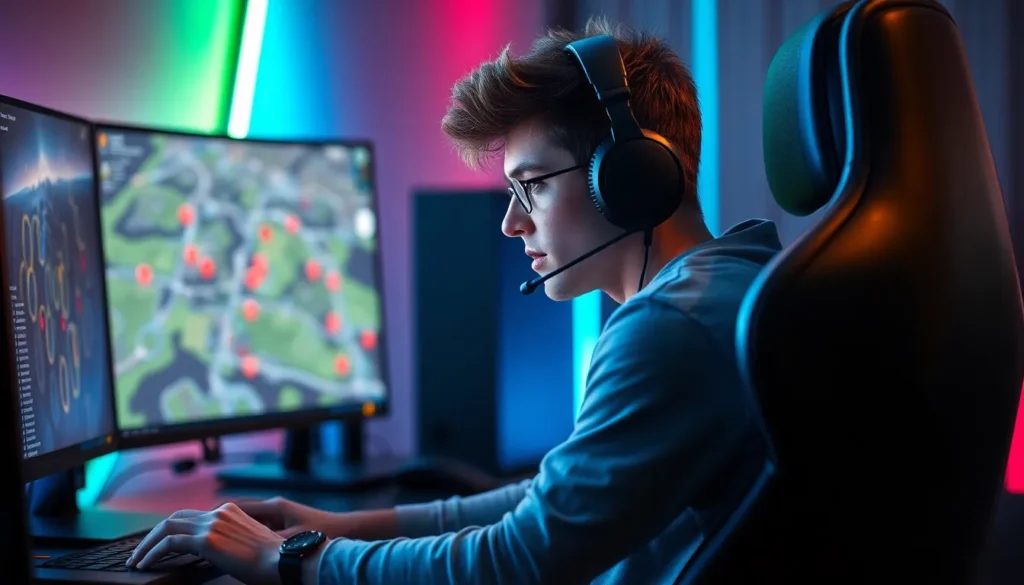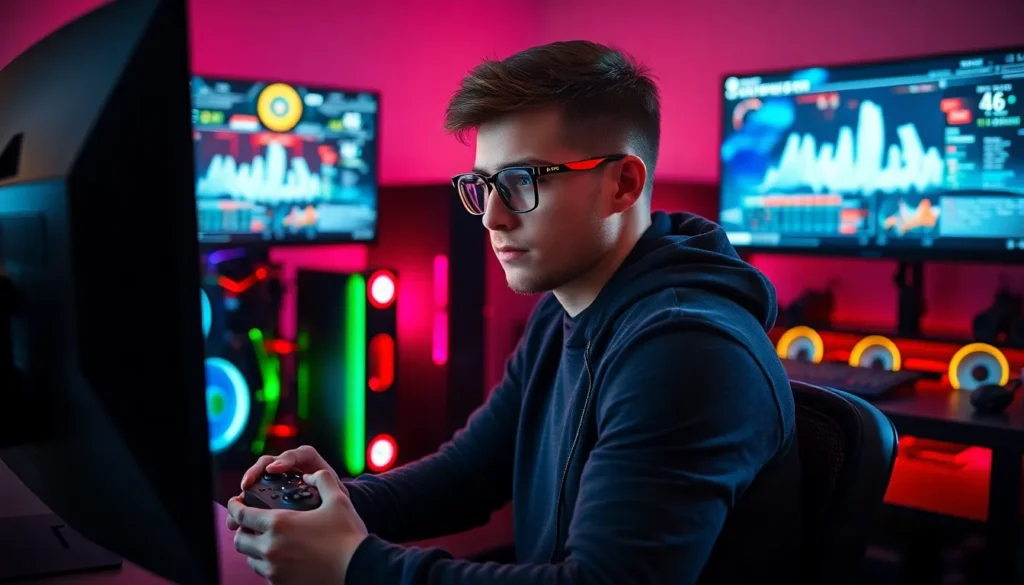In a world where every millisecond counts, wired headset latency can feel like the annoying sibling who just won’t stop talking during a movie. Imagine gearing up for an intense gaming session or a crucial video call, only to find your audio lagging behind. It’s like watching a dubbed foreign film—funny at first, but ultimately frustrating.
Understanding wired headset latency is key to unlocking the full potential of your audio experience. Whether you’re a gamer aiming for that sweet victory or a professional seeking crystal-clear communication, knowing how latency affects your setup can make all the difference. Dive into the nitty-gritty of this often-overlooked topic and discover how to keep your sound as sharp as your skills. After all, who wants to hear “Can you hear me now?” when the answer should be a resounding “Yes!”?
Understanding Wired Headset Latency
Wired headset latency affects audio experiences in various ways. Recognizing its implications enhances communication and performance in gaming, streaming, and professional settings.
What Is Latency?
Latency refers to the delay between audio input and output in a wired headset. This delay can disrupt the synchronization of sound with visual cues, creating an unpleasant experience during activities such as gaming or video conferencing. Measured in milliseconds, latency values below 20 ms are generally considered imperceptible. Headsets with higher latency may produce noticeable delays, leading to frustration with audio-visual misalignment.
Factors Influencing Latency
Several factors influence latency in wired headsets. Cable length plays a role; longer cables can introduce delays. The type of connector used also matters; some connectors are more efficient in transmitting audio signals than others. Additional factors include the quality of the audio chipset and the processing capabilities of the device driving the headset. Interference from nearby electronic devices can also impact performance, genuinely affecting overall audio clarity.
Measuring Wired Headset Latency

Measuring latency in wired headsets requires specific tools and methods. Several techniques allow for accurate latency measurement, enhancing audio quality.
Tools and Techniques
Use latency measurement apps for reliable data. Dedicated software often connects to the audio interface, capturing the time difference between input and output signals. Oscilloscopes represent another effective choice, displaying waveforms that visualize audio signals. These tools provide essential insights for anyone aiming to optimize audio performance. Portable sound level meters, while not primarily designed for latency, can assist by measuring overall sound speed across different environments. Such measurements may reveal additional factors impacting user experience.
Benchmarks and Standards
Recognized standards exist for assessing wired headset latency. Industry benchmarks typically regard 20 milliseconds as the threshold for imperceptible delay. Values above this mark often lead to noticeable synchronization issues in gaming or video calls. Manufacturers frequently strive to keep latency below this figure, ensuring an optimal experience. Reviewing specifications from reputable brands helps in comparing latency across different models. For professional applications, latencies closer to 10 milliseconds or lower are ideal, supporting seamless interaction. Accessing detailed data from tech reviews and user tests can further guide headset selection.
Common Issues with Wired Headset Latency
Wired headset latency can lead to several issues that impact user experience. Understanding these challenges is crucial for anyone using headsets for gaming or music production.
Audio Delay in Gaming
Audio delay significantly affects gaming performance. When latency exceeds 20 milliseconds, players may notice sound lagging behind visuals, creating disorientation. This delay disrupts timing during critical actions, such as shooting or dodging. Players depend on accurate audio cues for situational awareness. Headsets with lower latency, ideally around 10 milliseconds, enhance competitive advantage. Many gaming headsets now focus on minimizing this delay, providing a seamless experience essential for immersive gameplay.
Impact on Music Production
Musicians face unique challenges regarding wired headset latency. Delays can hinder recording sessions and alter timing in performances. Precision becomes critical when layering tracks or mixing audio. Latency nearing or exceeding 20 milliseconds makes it difficult to sync sounds accurately, potentially degrading the quality of the final product. Ideally, music producers aim for latencies below 10 milliseconds for optimal results. This ensures both instruments and vocals align perfectly during production, facilitating a smooth workflow that fosters creativity.
Comparing Wired and Wireless Headset Latency
Wired and wireless headsets exhibit notable differences in latency. Understanding these pros and cons helps users make informed choices.
Pros and Cons of Each
Wired headsets typically offer lower latency, often below 20 milliseconds. This delay provides near-instant sound response, making them ideal for gaming and music production. They rely on physical connections, so interference from electronic devices remains minimal. However, the cables can restrict movement and cause tangling. Wireless headsets, on the other hand, provide freedom of movement and convenience. They boast features like Bluetooth connectivity, allowing for easy pairing with devices. Unfortunately, larger latency, often exceeding 30 milliseconds, can hinder performance in fast-paced situations. Users may experience audio lag while gaming or during important video calls.
Real-World Performance Comparisons
In real-world scenarios, latency impacts user experiences significantly. Gamers using wired headsets report a competitive edge, thanks to response times around 10 milliseconds. Such performance enables quick reactions to in-game audio cues. Wireless headsets may offer similar functionality but often suffer from noticeable delays. A study indicated that players using wireless models experienced lag of up to 50 milliseconds, complicating gameplay. Music producers also favor wired options, as they ensure precise audio synchronization during recording sessions. Wireless alternatives provide flexibility, yet challenges arise when timing is crucial, often leading to subpar results.
Understanding wired headset latency is crucial for anyone seeking an optimal audio experience. Lower latency enhances performance in gaming and ensures precision in music production. With values ideally below 20 milliseconds for casual use and closer to 10 milliseconds for professionals, choosing the right headset can make a significant difference.
By considering factors like cable length and connector type, users can minimize delays and improve synchronization. For those serious about audio quality, reviewing specifications and utilizing measurement tools is essential. Making informed choices can lead to a more enjoyable and efficient experience whether in gaming or professional audio settings.








